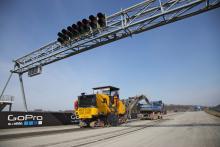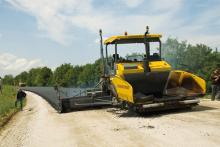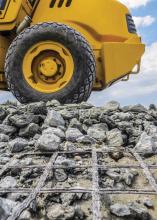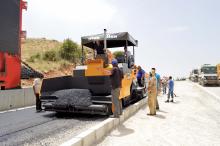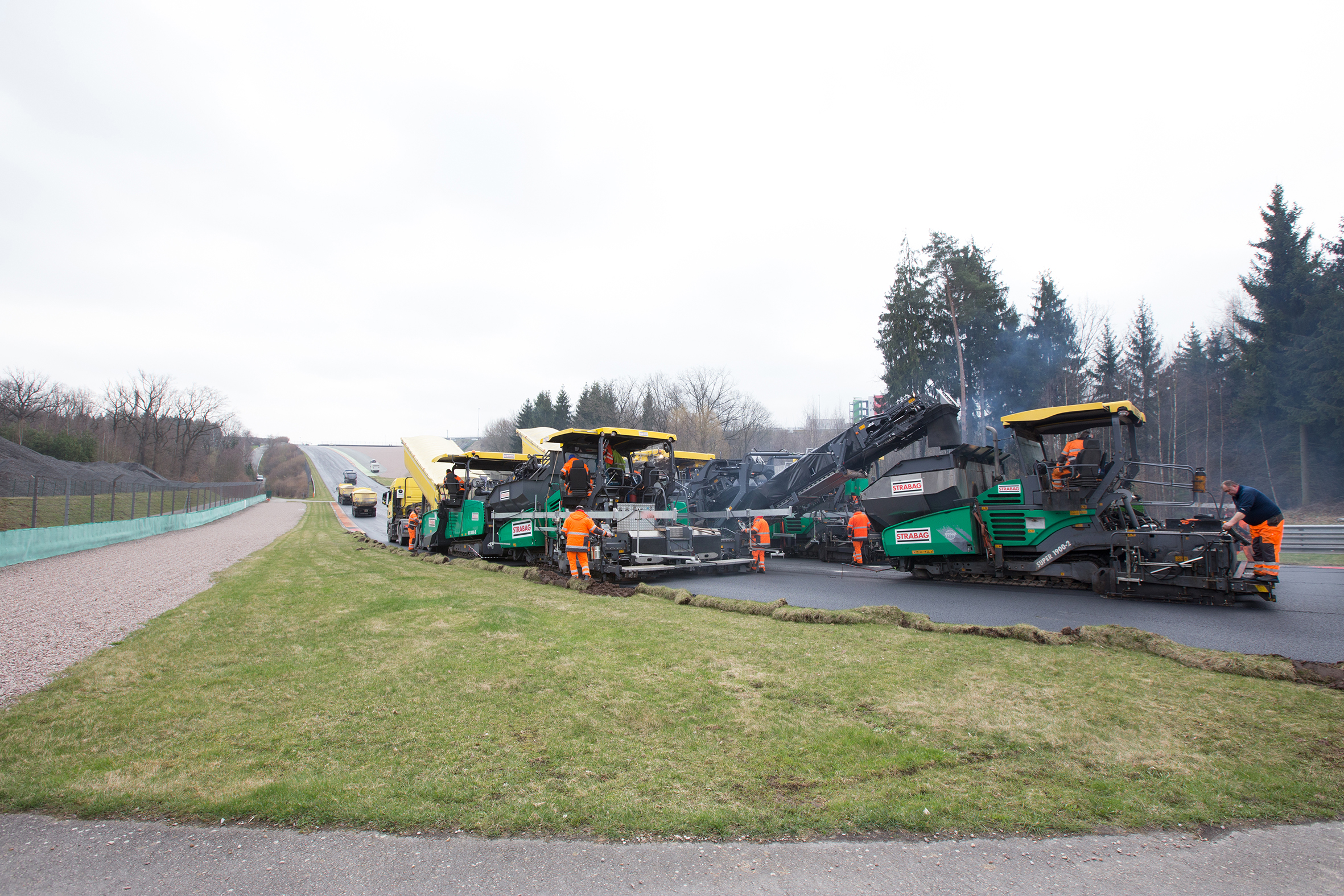
Equipment from the Wirtgen Group has been used to rehabilitate the legendary Sachsenring race track in Germany.
The legendary Sachsenring race track in the Ore Mountains, Chemnitz, Germany, has been rehabilitated so that it continues to meet FIM (Fédération de Motocyclisme International) requirements.
The demanding project entailed replacing the surface and binder courses, and this was handled by
While the Wirtgen machines created a level base true to line and level through precision milling, a mixing plant from Benninghoven and paving technology from Vögele ensured the high quality of the mix and the paving work.
During pavement rehabilitation at the track, which dates from 1927, the client decided to re-profile the track, changing its geometry on selected bends, a job carried out by the Wirtgen W 200 and W 220 large milling machines.
This meant milling off the existing asphalt pavement to a depth of 8cm with the call for tender specifying 3D levelling for the re-profiling of several bends.
The milling service provider used the digital terrain model previously created by the client to feed the processed data for levelling into the milling machines via an interface.
“This means that it is no longer necessary to scan references on the ground,” says Gerald Kluge, head of milling division at SAT.
“Instead, the machines receive their milling depth information via a total station that is set up next to the pavement surface which is to be milled. It automatically follows the cold milling machine with a range of up to 100m.”
A tight schedule meant that the rehabilitation work had to be completed as quickly as possible, and in combination with the 3D levelling system, the milling machines met the high evenness requirements of below 6mm, measured across a width of 4m. In addition, the grade of the milled surface was not permitted to deviate from the specifications of the digital terrain model by 8mm at any point.
The milling machines removed the surface and binder courses on the entire race track with an area of just over 50,000m² in only four days at an average advance rate of 7m/minute.
Following the milling work, Vögele asphalt pavers took over, with the paving widths and the exact tracks of the individual pavers for the entire section being defined in advance.
At 3.7km long when complete, the asphalt strip was to have no longitudinal joints with as few end-of-day stoppages as possible. With a paving width of approximately 5m and a rate of advance averaging 4m/minute, the pavers laid down just over 2,500tonnes of asphalt in 16 hours.
A requirement was that the degree of density immediately behind the pavers was not to vary by more than 2% between the left and the right side of the paved strips; no simple task, given a 14m wide, very twisty track widening to up to 20m in places. To avoid fluctuations caused by using different machines, it was also specified that identical pavers and screeds had to be used.
The contractor,
“Only if all screeds are coordinated with each other can we pave surfaces hot-to-hot, producing strips with the same requirement for subsequent compaction by rolling and no difference in height,” says race track specialist Dr Rainer Hart, who oversaw the job.
For that reason, a test field 12m x 40m was asphalted before paving began.
“When paving this test field, we make sure the mixing plant and the pavers are precisely coordinated under the conditions actually prevailing on site. That is the only way we can pave the actual track perfectly with asphalt of the highest quality right from the first meter,” says Horst Henninghausen, who has worked as a foreman in the construction of more than ten Formula 1 tracks.
Each day, some 1,300tonnes was delivered from the Benninghoven TBA 3000 mixing plant at the nearby Zwickau site to the race track on 15 trucks with an average round trip taking just under two hours, enabling the client, in collaboration with plant operator Deutsche Asphalt, to supply each paver continuously for 16 hours.
“With six screens, the Benninghoven plant in Zwickau is outstandingly well equipped. It also has everything else that we need for our high-performance asphalt,” says race track specialist Dr Rainer Hart.
“The batch mix reports indicate that the fluctuations are well within tolerances.”

